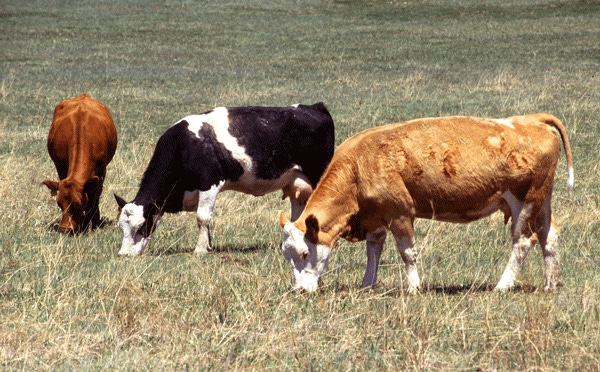
• There are Virginia livestock producers who have reported increased net profits of $200 per head due to the implementation of rotational grazing systems on their farms.• Rotational grazing systems can maximize farm profitability by recycling nutrients which results in a major reduction of purchased fertilizer inputs.
May 12, 2011

Due to the dramatic increase in fertilizer prices over the past several months, livestock producers are wondering how they can get the most bang for their buck with limited funds for fertilizer and lime purchases.
A current soil test takes out the guesswork and prevents the producer from under or over-applying lime and fertilizer, either of which will decrease your efficiency and profitability. Virginia Tech soil test laboratory recommendations are based on research conducted for Virginia soils and climate.
Livestock producers can reduce fertilizer purchases by implementing rotational grazing systems on their farms.
Rotational grazing is a management intensive system that concentrates animals within a relatively small area (paddock) for a short period of time, e.g. 1-3 days for beef cattle. Pastures are divided into multiple paddocks using a temporary fence.
Moving livestock to another paddock before over-grazing allows the forage to recover and resume growth. Animals are moved according to a flexible schedule based on herd size, the amount of land available, quality of forages in the paddock, and forage consumption.
Missouri [1] researchers estimated that grazing animals recycle 75-85 percent of forage nutrients consumed. An even distribution of manure throughout a paddock is required for productive plant growth.
Intensity of grazing rotations affects the manure coverage in paddocks. In an intensive rotational grazing system there is an even distribution of manure because animals compete for the available forage in the paddock before being moved to another paddock.
The Missouri researchers calculated that under continuous grazing practices it would take 27 years to obtain one manure pile per every square yard within a pasture. Conversely, it would take 2 years to achieve the same manure pile density using a two-day rotation. [2]
Location of feeding area also important
The location of hay feeding areas also impact the distribution of nutrients within a field with most manure being deposited near the feeding areas. Depending on weather conditions and the potential for creating ruts in the pasture, feeding areas should be moved throughout the pasture to insure a more even distribution of nutrients.
Whenever hay is baled, nutrients are removed from the field and exported to the feeding area. Kentucky researchers have estimated that a ton of grass hay (fescue, orchard grass) removes the following nutrients from the soil: 12 pounds of phosphate and 50 pounds of potash.[3] If these nutrients are not replaced, nutrient availability from the soil will be depleted over time.
Consequently, there will be a reduction in hay and forage yields. Soil testing determines the amount to fertilizer that needs to be applied to maintain hay yields.
Cooperative Extension educators can assist producers in the design of rotational grazing systems for their farms. Virginia Cooperative Extension work has shown the implementation of rotational systems can maximize profitability for cow/calf producers.
There are Virginia livestock producers who have reported increased net profits of $200 per head due to the implementation of rotational grazing systems on their farms. Rotational grazing systems can maximize farm profitability by recycling nutrients which results in a major reduction of purchased fertilizer inputs.
You May Also Like



